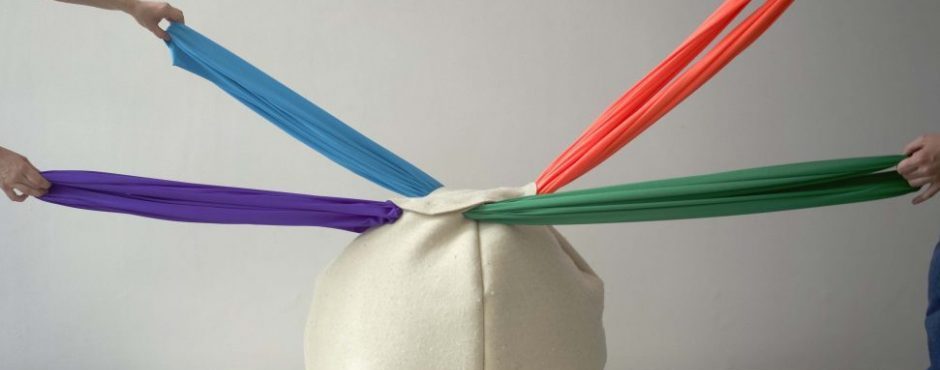Object-Based Learning (OBL) (500 words – actual words 595)
I focused on Empathic Modelling (EM) (Nicolle and Maguire, 2003; Poulson et al., 1996). EM aims to help participants experience and understand different disabilities to inform inclusive design. In it, participants use modified objects or environments to simulate conditions like visual impairment, mobility limitations, or hearing loss. Nicolle and Maguire (2003) explain that the goal is to develop empathy for users with diverse needs.
The PDF below shows the timed session plan and proposed activities.
The slides show the workshop’s content from start to finish.
I asked my peers to work in pairs. One person would wear the prop, participate in the task, and think aloud about their experience, while the other would be the guide/observer, documenting the experience by taking notes.
People seemed to enjoy the activities (see Figs 1, 2, 3), although the pair who simulated hand arthritis and tactile sensitivity loss did not fully immerse in the experience. This was likely due to how the buttons were taped to the joints, suggesting the need to either reconsider this task or assist the prop users in adequately positioning the props. They mentioned that holding small objects would have been more challenging.



After the activity, we took time to reflect critically on the experience. I asked my peers three questions to encourage provocative discussions, stimulate critical thinking, and challenge current pedagogical practices and attitudes toward diversity.



After discussing the second question, only one member identified a limitation, expressing negative feelings toward the practice, as it tends to ‘other’ people with disabilities. This critical reflection helped me transition into presenting my next slide, which I prepared based on previous experiences where people often struggle to identify limitations. This sparked a discussion about both the benefits and limitations of the practice. To address the final question, one peer suggested conducting more (prep/primary/secondary) research to move beyond superficial empathy. This was a valuable point, as approaches that rely solely on empathy can be limited (Spiel, et al., 2017). I also proposed that our attitudes and strategies to differences could be a tool for becoming better human beings, not just better designers. We then briefly looked into the medical and social models of disabilities, summarising the difference between the two and closing the argument on why inclusive design is essential
The final discussion was very reflective. Then, it was time for written feedback (Figure 4).

During discussions, a question arose about whether this method is still used today. Aside from that, all feedback was positive, with some describing the session as “very informative = medical vs social models,” “very reflective,” a “good exercise to discuss and impact,” and “experiential.” Participants noted that the session was “easy to understand,” “very accessible,” and opened up to a broader question. It touched on a “big question but offered a quick way to think about it.” Peers mentioned that it “makes you think more deeply about the students’ experiences” and that it was “a really great way to prompt thinking.” Additionally, it was noted that working in pairs was effective, as both roles felt relevant. Peers felt the roles “were important” and “allowed me to think about my role and my responsibilities in inclusive design.” Finally, the session provided “good critical learning.” Moving forward, I plan to rethink the physical disability task or assist the prop users in adequately positioning the tape and buttons. Empathic Modelling has proven successful at provoking critical thinking. As a starting point for reflection, this approach highlighted EM’s limitations and challenged current pedagogies. The proposed learning outcomes were achieved, which was all I could have hoped for.
References
Bennett, C.L. and Rosner, D.K., 2019, May. The promise of empathy: Design, disability, and knowing the “other”. In Proceedings of the 2019 CHI conference on human factors in computing systems (pp. 1-13).
Nicolle, C. and Maguire, M., 2003, June. Empathic Modelling in Teaching Design for All. In HCI (4) (pp. 143-147).
Silverman, A.M., 2015. The perils of playing blind: Problems with blindness simulation and a better way to teach about blindness.
Spiel, K., Frauenberger, C., Hornecker, E. and Fitzpatrick, G., 2017, May. When empathy is not enough: Assessing the experiences of autistic children with technologies. In Proceedings of the 2017 CHI Conference on Human Factors in Computing Systems (pp. 2853-2864).
Poulson, D., Ashby, M., Richardson, S.,1 996. Technology Initiative for Disabled and Elderly People. In USERfit: A practical handbook on user-centred design for assistive technology. ESCE-EC-EAEC.
